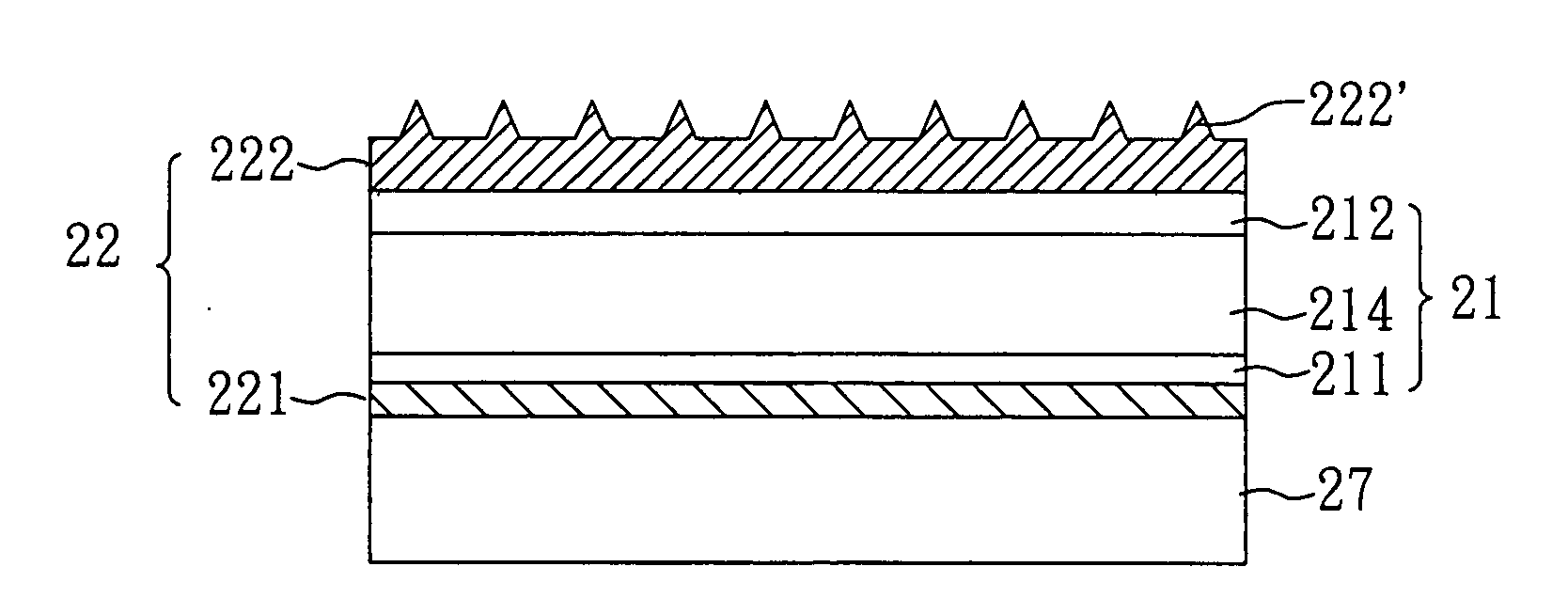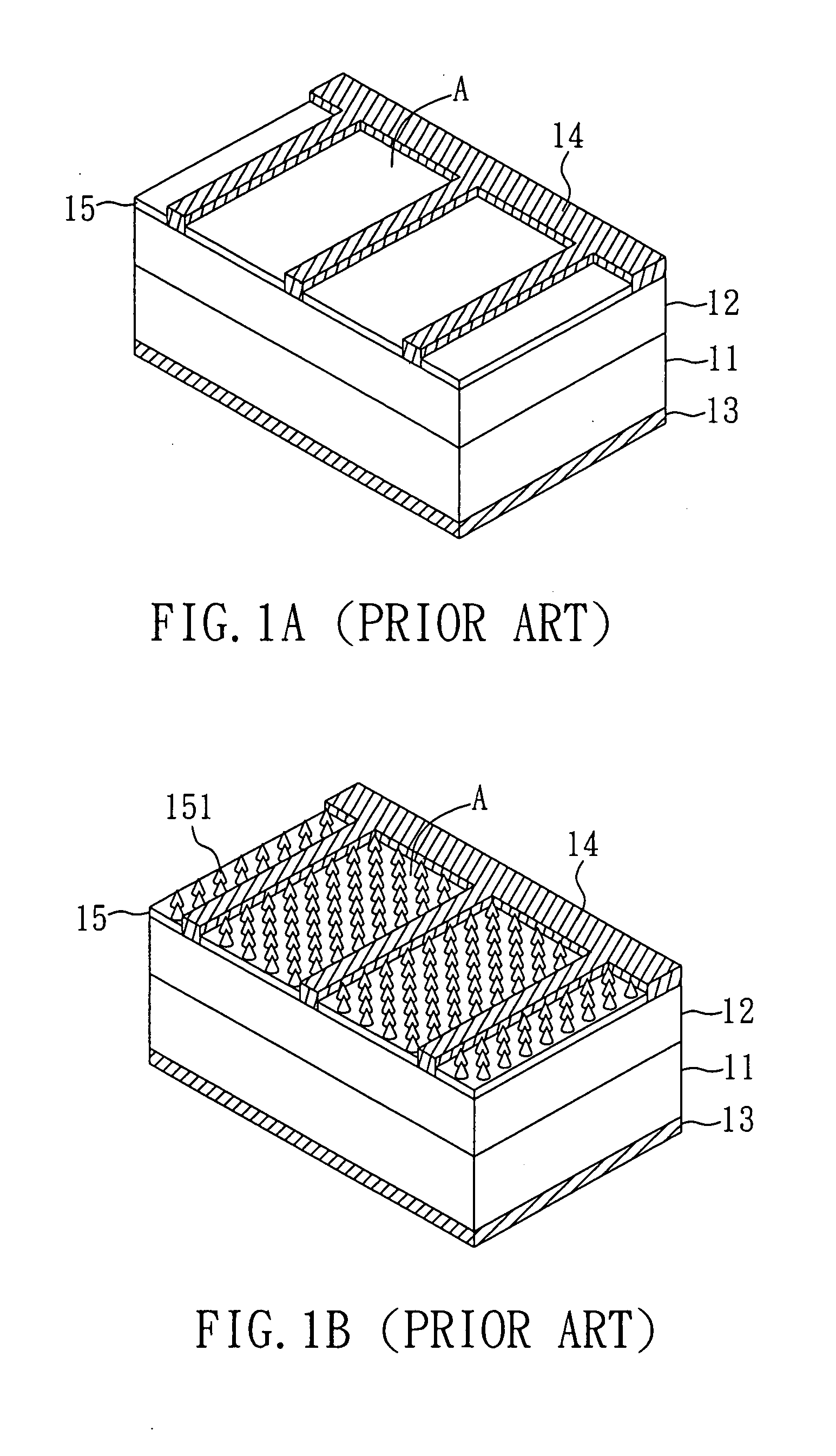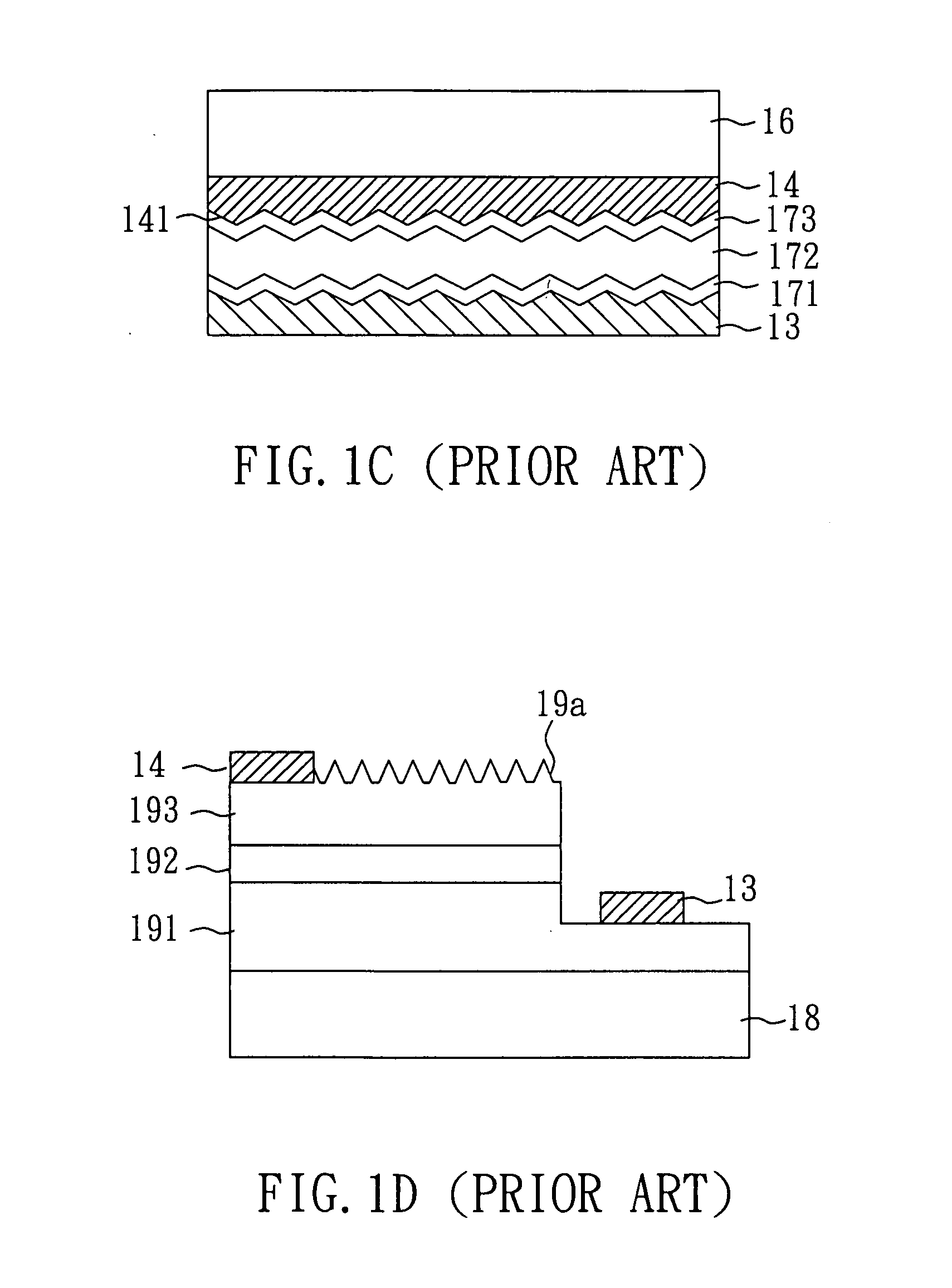Sub-wavelength structure layer, method for fabricating the same and photoelectric conversion device applying the same
a technology of structure layer and photolithography process, which is applied in the direction of solid-state devices, semiconductor devices, electrical devices, etc., can solve the problems of high manufacturing cost, limited application, and high cost of sub-wavelength anti-reflective structure fabricated by expensive and complex photolithography process, etc., to achieve excellent anti-reflection effect, enhance light output power, and simple and low cost technology
- Summary
- Abstract
- Description
- Claims
- Application Information
AI Technical Summary
Benefits of technology
Problems solved by technology
Method used
Image
Examples
example 1
[0042]FIGS. 2A to 2E show a process for fabricating a sub-wavelength structure layer as an antireflective layer on a silicon wafer.
[0043]First, as shown in FIG. 2A, a (100) silicon wafer 20 was cleaned with diluted HF to remove the native oxide. Subsequently, a 200±5 nm thick passivation layer 25 was deposited on the silicon wafer 20 by plasma enhanced chemical vapor deposition (PECVD) technique. In the present example, the passivation layer 25 was a silicon nitride (Si3N4) layer.
[0044]Next, as shown in FIG. 2B, a metal film 26 with a thickness of 15±0.5 nm was evaporated on the surface of the passivation layer 25 using an E-beam evaporating system. In the present example, the metal film 26 was made of nickel.
[0045]As shown in FIG. 2C, the metal film was then rapid-thermally annealed under the gas mixture of H2 and N2 with a flow rate of 3 sccm at 850° C. for 60 seconds to form self-assembled metal nano particles 26′ (owing to surface tension), which served as a mask for the passiva...
example 2
[0048]The fabricating process was the same as that illustrated in the Example 1, except that the metal film was made of gold and the metal nano particles were removed using an etchant composed of potassium iodide and iodine. In the present example, the heat treatment was performed on the metal film at 850° C. for 60 seconds.
experimental example
[0050]The sample of Example 1 was compared to those of Comparative Examples 1 to 3 in reflectivity, and the result is shown in FIG. 3. As shown in FIG. 3, the untreated blank silicon wafer (Comparative Example 1) exhibits high reflection >35% for visible and near infrared wavelengths; the single-layer antireflective layer of silicon nitride (Comparative Example 2) exhibits low reflection 35% for shorter wavelength 400 nm; and the two-layer antireflective layer of silicon nitride / magnesium fluoride (Comparative Example 3) exhibits low reflection 20% for shorter wavelength 400 nm, while the sub-wavelength structure of silicon nitride (Example 1) shows reflection <10% for wavelengths from 400 nm to 700 nm and reduced reflection <1% for wavelengths from 580 nm to 680 nm.
[0051]Thereby, it can be confirmed that the antireflective layer according to the present invention exhibits an excellent antireflection effect, and thus can enhance the amount of light extraction when being applied in a...
PUM
| Property | Measurement | Unit |
|---|---|---|
| thickness | aaaaa | aaaaa |
| diameter | aaaaa | aaaaa |
| height | aaaaa | aaaaa |
Abstract
Description
Claims
Application Information
 Login to View More
Login to View More - R&D
- Intellectual Property
- Life Sciences
- Materials
- Tech Scout
- Unparalleled Data Quality
- Higher Quality Content
- 60% Fewer Hallucinations
Browse by: Latest US Patents, China's latest patents, Technical Efficacy Thesaurus, Application Domain, Technology Topic, Popular Technical Reports.
© 2025 PatSnap. All rights reserved.Legal|Privacy policy|Modern Slavery Act Transparency Statement|Sitemap|About US| Contact US: help@patsnap.com



